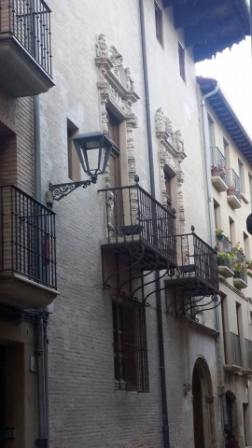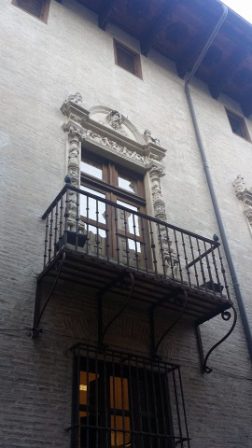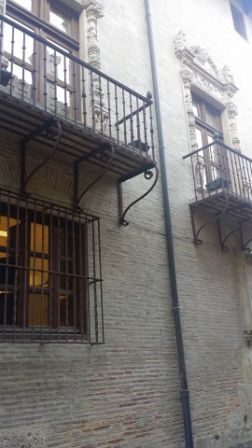September 5
lecture series
ESTELLA ES ARTE-LIZARRA ARTEA DA
The Palace of San Cristobal: An example of "talking" architecture
D. Gregorio Díaz Ereño
Jorge Oteiza Museum
From the earliest times of mankind, human beings have tried to dialogue with their fellow human beings through images or symbols that are more or less cryptic but that allow them to convey a message that in turn makes the sender of the message known. Architecture, from its beginnings, has been something more than a built space and its walls, either through relief, sculpture or painting or other representational elements, have been a splendid canvas to show religious or political ideologies.
In Estella-Lizarra, in the 16th century, we have a clear example in the decoration of the façade of the Palace of the San Cristóbal family, better known today as Casa de Fray Diego or Casa de Cultura, located in the Rúa, in the San Pedro neighborhood. First of all, we are in a period of economic boom for the city, which will result in an increase of the population and a cultural and artistic reactivation. Testimony to this is the Estudio de Gramática and later, in 1546, the installation in the city of Ega of a printing press (the third in Navarre) whose promoter Miguel de Eguía, a printer of extensive experience, had participated in Alcalá de Henares in the printing of the Biblia Políglota and the Gramática de Nebrija. His workshops produced books on Philosophy, music, liturgy, Humanities, and he achieved great fame for his editions of Erasmus of Rotterdam.

Facade of the palace of the San Cristobal family, known as the house of Fray Diego or Casa de Cultura.
With this humanist spirit, a palace was built with a beautiful façade where brick predominates and which stands out for its monumental verticality. The façade is richly ornamented with grotesques and is completed by a second floor with two ornate balconies. The one on the left represents four of the twelve labors to which the mythical Heracles was subjected. During the Renaissance, the gods of Greek and Roman mythology became examples of virtue, constituting models for Christian man to follow, in such a way that their exploits were understood as doctrinaire examples, making a reading of these in core topic moral, hiding behind each episode a truth applicable to everyday life. Heracles will become a model of virtue, gaining immortality on the basis of his brave work to impose the good and put an end to vices. For this reason he acquires a protective character of the houses because "he did not let pass neither evils nor bad ones".
We can see the struggle of Heracles against the Hydra of Lerna, facing the giant Antaeus, defeating the lion of Nemea and against the centaur Nessus, although this episode is outside the twelve labors. Despite the immediate reading, it is necessary to consider that each of these episodes, not only highlights the strength of the hero, but makes reference letter to the firmness of the spirit, to the constant struggle between virtue and vice. For all this, Heracles is considered the prototype of the Christian knight, victor of the most harmful capital sins such as envy, lust, pride and greed, being crowned by virtue as a reward for his efforts. The destruction of these monsters must be read as a purgation of the passions. The emaciated face that appears on the frieze revives the prototypical image of the Stoic, whose Philosophy maintains that the essence of happiness is in the internship of virtue, manifested by an orderly life lived with decorum, which is achieved with the Withdrawal and effort.
In the second balcony we can contemplate, on a frieze with bucraneans, the bust of a lady that we could identify with Ceres, Diana, Hebe or Minerva: symbol of fertility, emblem of chastity and childbirth, goddess of youth or image of wisdom representing the idea of orderly and meditated struggle.


The balconies are framed by mythological scenes, which make the building a "talking" architecture.
The façade has crystallized into a "talking" architecture of universal value, making the house a decalogue, a model of behavior appropriate to the owner's thinking. And the achievement of virtue will be a constant aspiration in the humanist thinking of the sixteenth century, hence living subject to the good will be considered the proper end of life and human acts.
